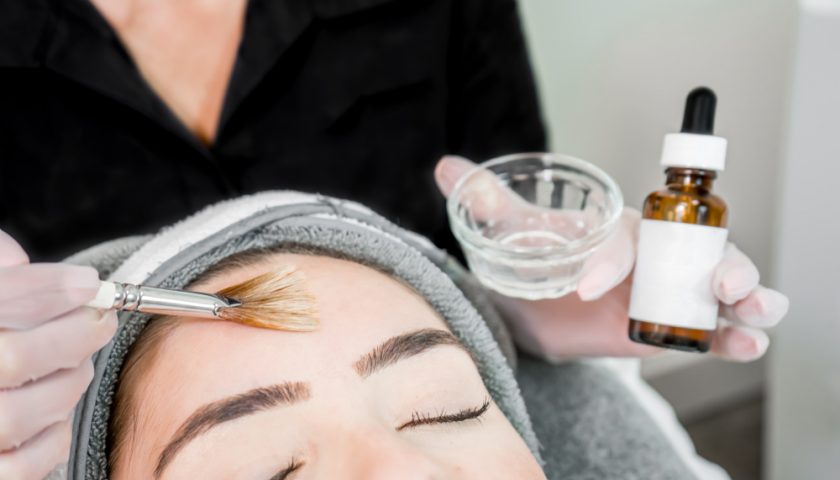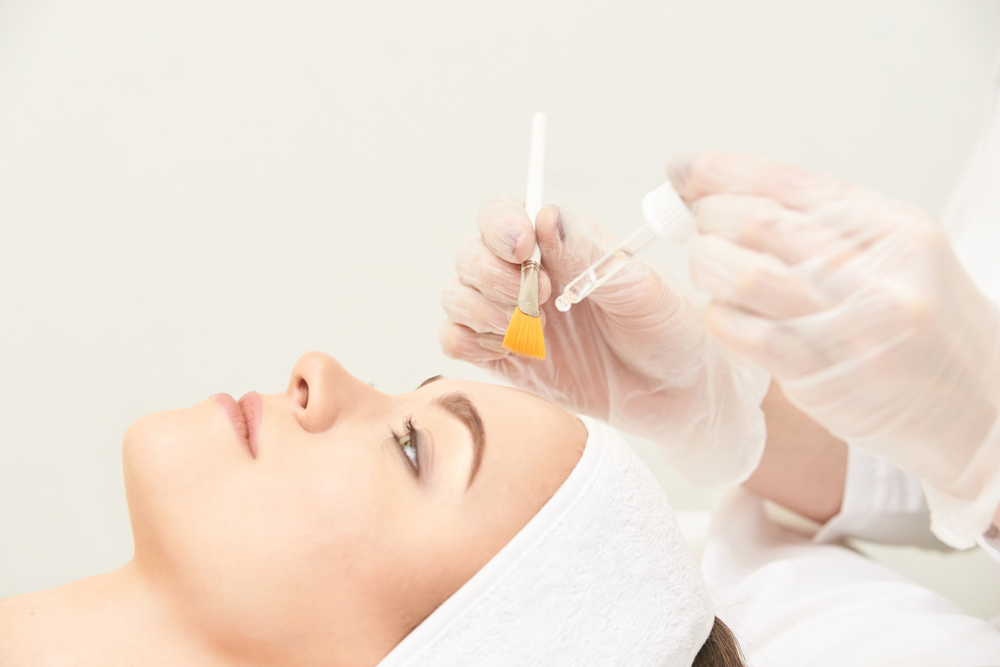There are a few crucial ingredients to be aware of in the battle against breakouts, and salicylic acid acne treatment is at the top of the list.
Simply put, salicylic acid is one of the worst enemies of acne. But what exactly does salicylic acid do for the skin, and how can you get the most out of it?
Continue reading to learn how salicylic acid can help clear acne, how to use it, what type to use, and what side effects to be aware of.
Table of Contents
What is Salicylic Acid?
Salicylic acid is a beta hydroxy acid. It is anti-inflammatory and antibacterial, as well as an exfoliant for removing dead skin cells.
It’s well-known for eliminating acne and keeping pores clear. Mild acne (blackheads and whiteheads) responds best to salicylic acid acne treatment. It may also aid in the prevention of subsequent outbreaks.
Salicylic acid can be found in a range of over-the-counter (OTC) products, such as salicylic acid face wash for acne. Prescription-strength formulations are also available.
Also, learn in detail about mandelic acid for acne-prone skin.
How Does It Work?
Acne develops when dead skin cells and excess oil clog pores in the skin. Bacteria can get stuck inside the pore and cause inflammation and pus-filled pimples.
By unclogging clogged pores, salicylic acid treats acne. It accomplishes this by breaking down the connections between dead skin cells, allowing them to more easily exit the pore, and by breaking down lipids, such as sebum.
Salicylic acid acne treatment also reduces sebum production in the skin, resulting in fewer breakouts.
How Long Does Salicylic Acid Take to Work?
How long does salicylic acid take to work? This is the most frequently asked question by people dealing with acne.
Well, it may take 4-6 weeks for you to notice the full benefit of this product. However, if you haven’t seen any results after 6 weeks, consult your dermatologist. To visit with the best dermatologists near you, make an appointment via Healthwire.
What Form and Dosage of Salicylic Acid are Recommended for Acne? And How to Use it?
Salicylic acid is available in two forms – OTC products or as a chemical. What form and how many doses you need will be prescribed by your dermatologist or doctor depending upon your skin type and present condition.
Let us now look closely at the salicylic acid acne treatment forms, their recommended dosage, and how to incorporate them into your skincare routine.
1- Over-the-counter Topical Treatments
The OTC topical treatments of salicylic acid are available in gel, lotion, cream, cleansers, etc. Their recommended dosage is 0.5% to 2%.
Now, the question is: how to use it?
It can be difficult to know how to incorporate acne products into your skincare routine. Is it applied before or after the moisturizer? After the serums, what’s next?
Obviously, the type of salicylic acid product you use makes a difference. If you’re using salicylic acid face wash for acne, apply it twice a day, once in the morning and once at night. If you notice any dryness after salicylic acid acne treatment, simply reduce the number of times you wash your face with this cleanser to once a day.
How long does salicylic acid take to work? For greater results, if you’re using a spot treatment, wash your face first and then apply the cream to the breakouts. Allow one to two minutes for the lotion to dry before applying your moisturizer and SPF.
2- Chemical peels
According to the top dermatologist in Lahore, Dr. Shaiqa Ali “Salicylic acid is also an exfoliator that helps to remove dead skin cells.” Chemical peels comprising up to 50% concentration of salicylic acid can be used by practitioners.

Salicylic acid acne treatment in the form of chemical peels can help with the following types of acne and pigmentation:
- Papules
- Whiteheads
- blackheads
- Hyperpigmentation
What’s more? If you want to get a chemical peel using salicylic acid, it is critical that you engage in the procedure’s aftercare.
Only use mild cleansers and dermatologist-recommended moisturizers for the first two days after a chemical peel until the discomfort subsides.
Get to know more about chemical peels.
Does Salicylic Acid Have Any Side Effects?
Is salicylic acid bad for the skin? Although salicylic acid is generally regarded as harmless, it might cause skin irritation when used for the first time. Salicylic acid acne treatment may also remove too much oil, leaving your skin dry and irritated. The use of salicylic acid can lead to flaky skin. If it causes itchiness or makes your skin more sensitive, makes sure that you discuss it with your skin specialist.
Other potential side effects include:
- Itching
- Skin stinging
- Peeling skin
- Hives
Precautions While Using Salicylic Acid
Those using salicylic acid for acne should keep in mind the following precautions:
- Before applying any salicylic acid-containing product, patch test it on a tiny area of the skin. If a reaction occurs at the patch test site, do not use the product.
- Avoid using the product in higher doses or for longer periods of time than recommended on the label.
- Avoid using it on newborns or children.
- When using SA products, always keep your skin protected from the sun.
Furthermore, the concern with salicylic acid acne treatment is salicylic acid poisoning. Though it is not common, it can occur when the acid is applied topically. Follow these guidelines to lower your risk:
- Do not use salicylic acid treatments on large portions of your body.
- Don’t use it for long periods of time.
- Don’t use it on the skin under air-tight dressings.
Women who are pregnant or someone who is taking certain medicines should not use salicylic acid. You should ask your doctor how to use salicylic acid. People should apply one drop at a time on the affected area. You can repeat it twice a day as excessive use may cause itching or dryness.
How Salicylic Acid Can Be Used To Treat Scalp Dandruff And Psoriasis?
Salicylic acid is a beta hydroxy acid type that deals with dry scalp issues. It is also effective for psoriasis and helps in shedding more dead skin cells. People with psoriasis can get the benefit of salicylic acid as it helps to soften the scales on the scalp and make it easy to remove them.
When to Contact A Doctor?
If you develop any of the following symptoms or signs, stop using salicylic acid immediately and visit your doctor:
What Are the Benefits of Using Salicylic Acid in Combination With Other Skincare Ingredients?
There are many benefits if you use it in skincare products along with other ingredients. Let’s discuss some of the dermatologists’ shared benefits of salicylic acid.
- Salicylic acid in sunscreen protects the skin against sun damage and prevents acne
- A moisturizer with salicylic acid helps in the exfoliation of the skin while also hydrating the skin
- A vitamin C ingredient with such acid gives skin brightening effects and minimizes dark spots appearance.
You should not use the combination of ingredients by yourself. Make sure that you discuss it with a doctor before using it.
Summary
Salicylic acid is an acne-fighting chemical that can be found in skincare products. By breaking down and eliminating dead skin cells and oil, salicylic acid can help unclog blocked pores.Skin irritation or peeling are possible side effects of salicylic acid. People should stop using the product and consult with a dermatologist of Fauji Foundation Hospital Rawalpindi if they suffer more severe adverse effects.
